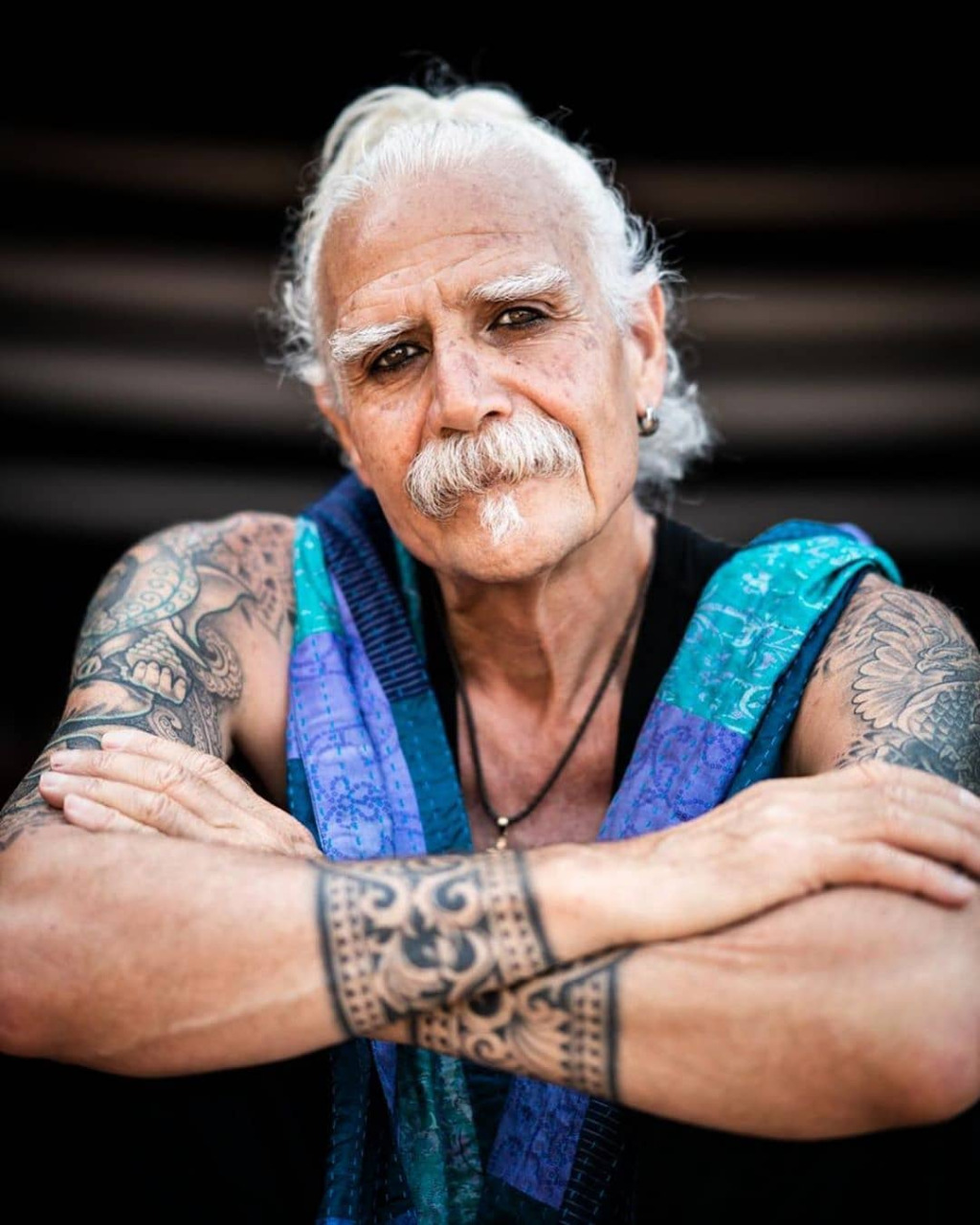Bahramji feels like a gift from our ancestors to pump spirit into our modern age electronic music. From chillout ambient tunes, psychedelic dub and finally into deep dance music, he has been injecting his hypnotic wisdom into endless collaborations with an array of top notch artists that have been pioneering and changing the face of dance floors around the world. Bahramji the human, as his music, is a result of a merge of different cultures from different ends of the globe. Born in Iran, travelling and studying in India and eventually settling in Europe, yet still being the travelling vagabond he always was, his enchantment connects the past with the future, the east with the west. Here is our interview with the great and graceful Bahramji.

You started playing music at a very early age. However, you blurred the line between music and spirituality. At which point in time did that shift happen, or was it traditional heritage?
It started in 1980 in India with different musicians from all over the world. At that time, there was a wave of change-seekers gathering from so many different countries in India.
Although you are essentially an acoustic artist, your influence in the world of electronic music has had a great impact and attracted a worldwide audience for your sound. Do you think it is a collective expansion of consciousness or an experimental break from modern sounds?
You have to move with the time, in the moment. This moment the people identify with electronic music, especially for dancing and celebration.
You bridge the gap between generations in music and spirituality. As a listener, where do you mostly find yourself getting lost?
It is not a matter of getting lost, it is dissolving and being one with the music and the divine.
The life of peace and spirituality versus the messy life of a touring artist. How do you maintain this balance?
You always find the way and the time of being with yourself and staying centered.

What would you say are the 3 essential albums that changed your life as a musician?
Call of the Mystic, Sufi Safir and Divaneh.
Tell us a bit about your upbringing. How did the Persian culture influence you as a person, an artist and a guru?
I am not a guru. I just follow my own path, just being myself.
I grew up as the eldest son in a big and very loving family, simple and traditional, in Kermanshah. I was always surrounded by the musicians, singers and poets in my family. All my Persian and Kurdish inspiration comes from my beautiful childhood and culture.
Tell us a bit about your creative process, how do you compose your tracks alone versus a collaboration with an electronic artist?
I always play santour and sing by myself. I never make any plan or arrange songs.
It all comes spontaneously when I start playing. I experiment with different instruments such as Persian setar, ney and percussion. Then the songs are born one after the other. They come from the source of my being and a lifetime of experience.
I then go to the studio to arrange, mix and add the technical part of the music.
You have worked with an array of electronic artists from psychedelic dub to deep house dance music. Which electronic music style you felt most comfortable and at home in?
I feel the most comfortable with lounge music, like on the album ‘Call of the Mystic’, and meditative music. I always like to experiment with all sorts of music and I love to see people dance when I am performing.

You have spent a long life making music since a very early age, tell us a bit about how you see the future and what inspires you to keep giving.
I am always living in the moment; no past – no future.
Everybody coming into this world has a mission. And my mission is: bringing happiness and silence to the people.
How do you see music evolving in the future, blurring the lines between the past, the future, the ears and the spirit?
Music has no past and no future. It has always been there and always will be there.
The difference is: it is changing with the time, the place and the culture of the people.

